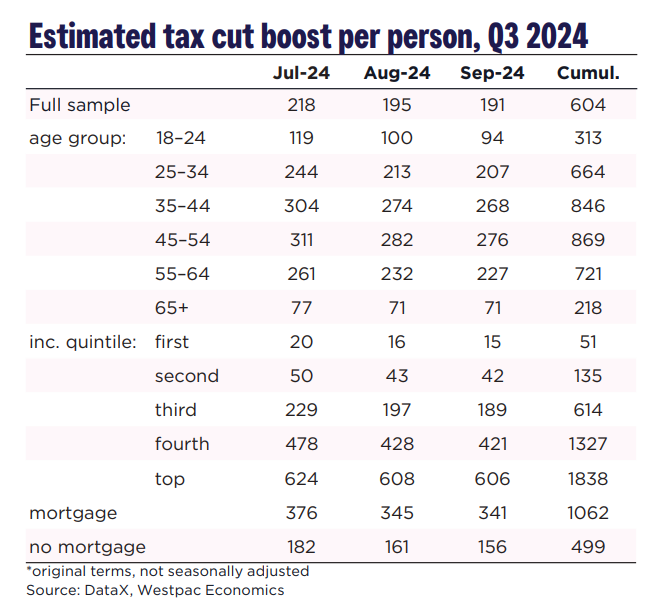

The latest Westpac–DataX Consumer Panel revealed insights into income and spending for the September quarter, following the introduction of Stage 3 tax cuts.
Household income rose by 5.8% in original terms and 2.4% seasonally adjusted, with tax cuts contributing 66% of the income increase.
On average, individuals saw a cumulative benefit of $604 over the first three months of the financial year, while those in the top tax bracket received up to $1,800.

The total increase in disposable income across the economy reached $6.4 billion, higher than expected due to a strong labor market.
However, spending has not risen in proportion to the income increase.
Despite the significant income boost, spending only rose 1.5% in the September quarter – marking the strongest quarterly increase in two years but still modest. Key spending areas included transport, entertainment, recreation, and dining.
Interestingly, lower-income households – which saw minimal benefit from the tax cuts – had the largest spending growth, influenced by increased government support payments.
Meanwhile, those in higher income groups spent only a small fraction of their tax benefit, indicating cautious consumer behavior.
Households spent just 16% of their tax cut benefit, saving the remaining 84%. Even with a more conservative estimate, only 28% of the tax boost has been spent.
RBA’s forecasts likely expected a higher propensity to spend, meaning the anticipated increase in consumption has not yet materialised.
With spending modest, households have redirected their disposable income toward savings and debt repayments.
The September quarter saw the largest net inflow into savings accounts since 2021 and a notable reduction in mortgage balances, reflecting increased principal repayments. Young adults doubled their savings inflows, while older cohorts also increased their savings.
The data suggested that inflation risks from tax cuts remain subdued, aligning with RBA’s efforts to contain inflation. However, the slow spending response may dampen hopes for a robust consumption recovery once monetary policy eases.
Future shifts in consumer behavior could still change this outlook, but for now, households appear focused on rebuilding savings and reducing debt, rather than spending their tax windfall.
Regular updates from the Westpac–DataX Consumer Panel will be essential to monitor these trends moving forward.
Get the hottest and freshest mortgage news delivered right into your inbox. Subscribe now to our FREE daily newsletter.
